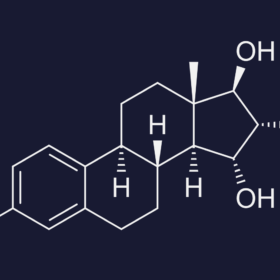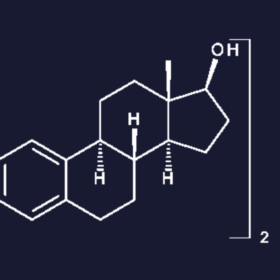
What are hormonal contraceptives and how do they work?
In this article
What's the lowdown?
- Hormonal contraceptives prevent pregnancy by stopping sperm from meeting an egg.
They contain different types of progestogen and/or oestrogen.
The different hormones found in each contraceptive can’t be directly compared because they have different levels of potency.
To understand how to compare levels of hormones, speak to a healthcare professional.
What are hormonal contraceptives?
Hormonal contraceptives use synthetic versions of our natural hormones to prevent pregnancy. Synthetic versions are man made and do not have the exact chemical structure as the hormones our own body makes. Every hormonal contraceptive contains synthetic progestogen. Combined hormonal contraceptives contain progestogen and also oestrogen. The oestrogen in combined hormonal contraception is usually a synthetic version, but some newer brands (Zoely and Qlaira) have types of oestrogen that are “body identical”, meaning they are the same chemical compound as the oestrogen our body makes.
How do hormonal contraceptives work?
Hormonal contraceptives work to prevent pregnancy by stopping sperm from meeting an egg. The hormones make your cervical mucus thicker to prevent sperm from entering the womb to fertilise an egg. They also thin out your womb lining which prevents a fertilised egg from implanting in the womb and growing. Most hormonal contraceptives also prevent ovulation (the release of an egg), although many women using a hormonal coil or the progestogen-only pill brands Noriday or Norgeston will still ovulate.
Hormonal methods of contraception
Types of hormonal contraception include:
Advantages and disadvantages of hormonal contraception
Advantages:
- Highly effective at preventing pregnancy
- Do not interrupt sex
- Can improve heavy or painful periods
- Can be used as treatments for reproductive health conditions such as endometriosis, PCOS, adenomyosis and PMS or PMDD
Disadvantages:
- May cause side effects
- Some methods increase your risk of cardiovascular disease and blood clots
- Some methods can increase the risk of some forms of cancer
Contraception hormone levels
Working out the hormone levels of different contraceptives is quite complicated. Especially as there are many different types of progestogen and oestrogen found in hormonal contraceptives.
Types of progestogen found in hormonal contraceptives:
Types of oestrogen found in hormonal contraceptives:
How to compare hormone levels in contraception
The graph below shows the amount of hormone (oestrogen and progestogen) contained in a pill, or released in a 24 hour period, for every brand of contraception The Lowdown features. The amount of hormone is in micrograms (mcg), which is one millionth of a gram – tiny!
While you might look at these graphs and think that some contraceptives are out of the question because of the amount of hormones released, it’s actually more complex. You cna only compare the levels of hormone if they are the same type. For example, Microgynon contains 150mcg of the progestogen levonorgestrel, compared to the Mirena coil which releases 20mcg of levonorgestrel every 24 hours.
All contraceptives – approximate daily hormonal release rates (micrograms)
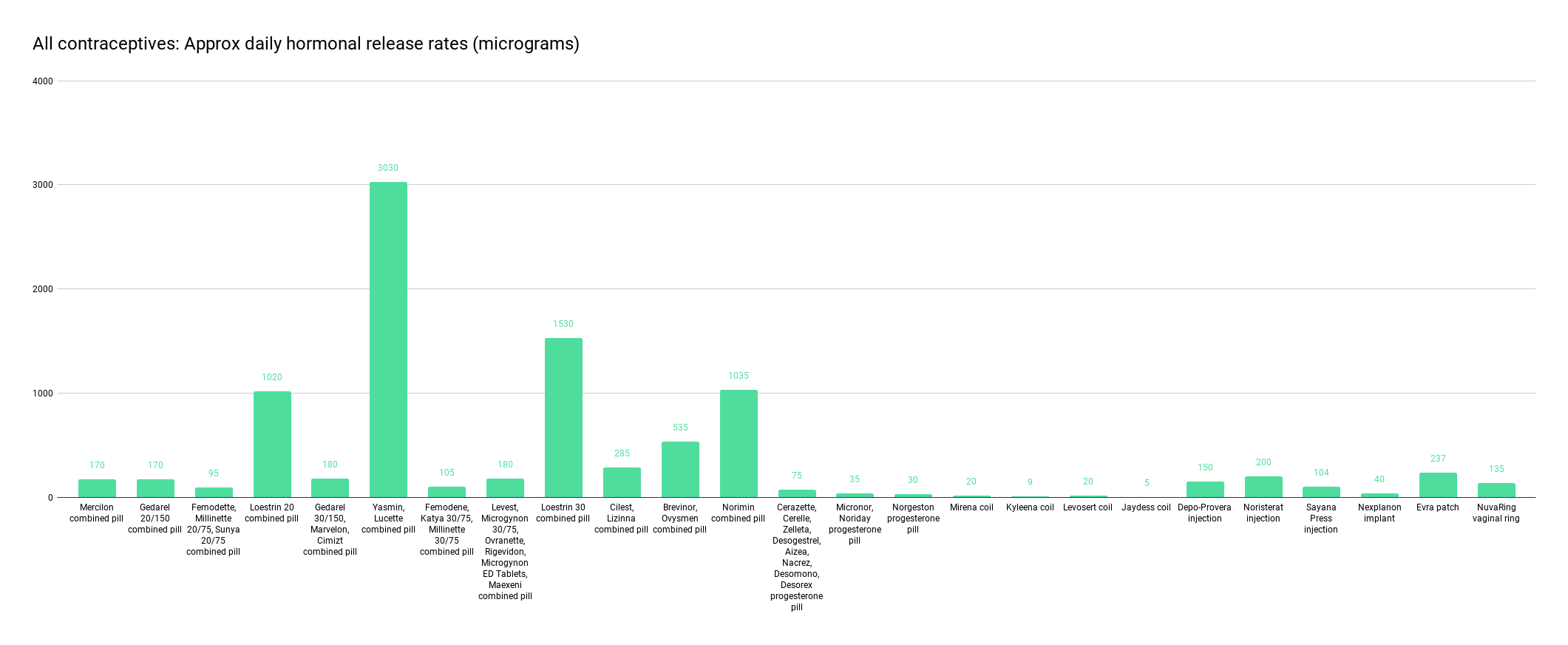
As you can see it varies quite a lot. But this doesn’t mean that some types or brands are ‘better’ or ‘worse’ than others, because different types of hormones have different levels of ‘potency’. Potency is how much of a drug is needed to give a certain affect. A highly potent drug causes an effect on the body at low concentrations, while a drug of lower potency causes the same effect but only at higher concentrations. For example, the hormone drospirenone (which is in the Yasmin combined pill, Lucette and Slynd) needs a lot more than other pills (3000 to 4000mcg) to work as a contraceptive.
Combined and progestogen only pills: micrograms of hormone in each tablet
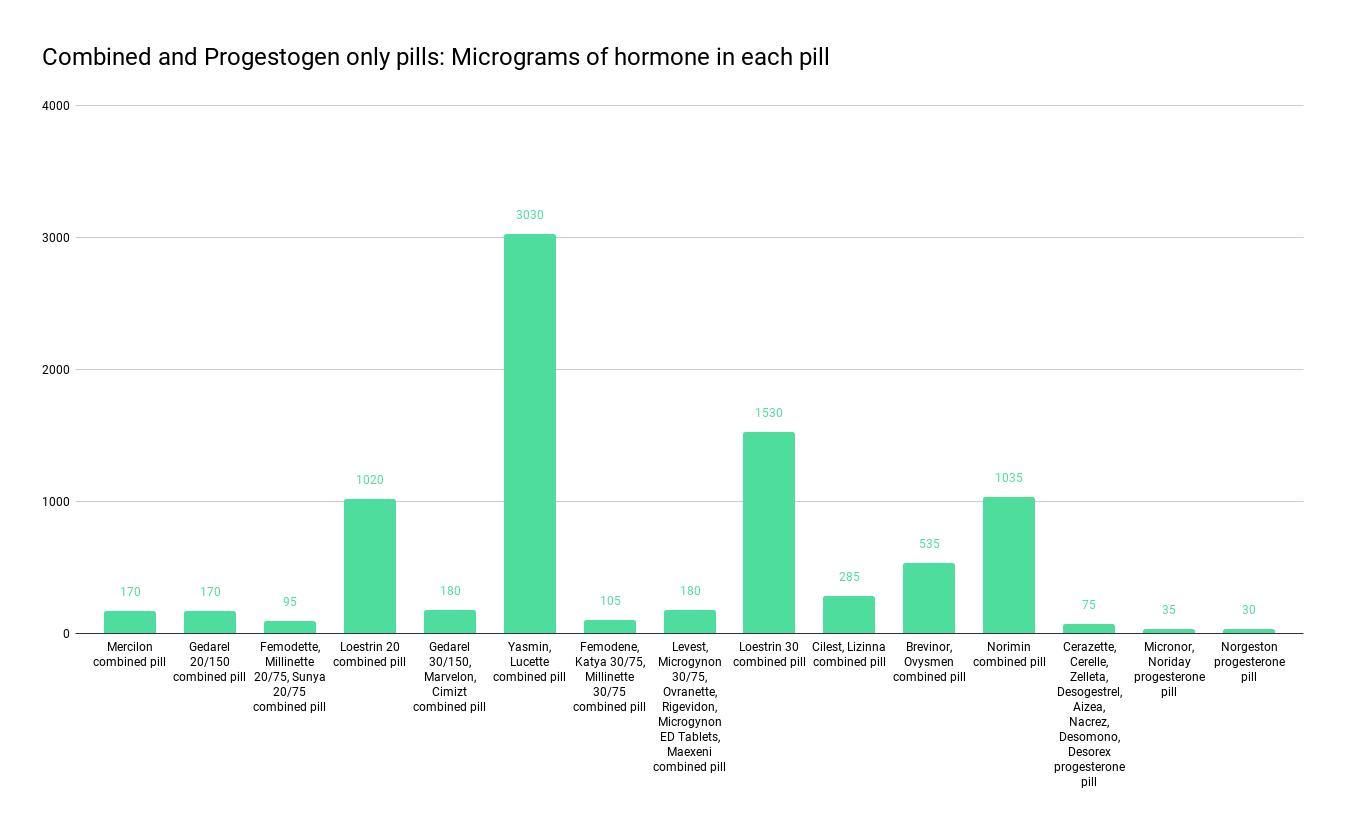
Contraceptives also contain inactive ingredients – things like lactose, starch or saline solution that help to bind the pills together, or help inject or deliver the hormones into your blood supply or body. These can also impact the way you metabolise the hormones in the contraceptive – whether it acts quickly or slowly in your system.
If we break this up to just look at the combined and progesterone only pills, you can see that many different brands of pill contain exactly the same type and amount of hormones. (above)
Hormonal coil (IUS): approximate micrograms of hormone released every 24 hours (averaged over a 5 year period)
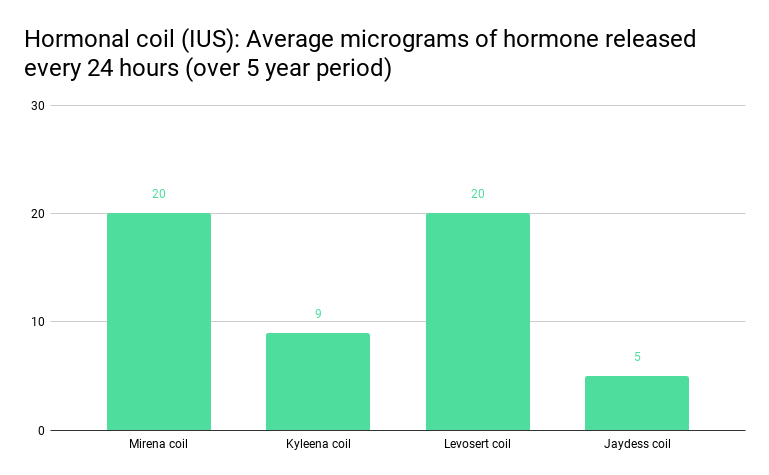
The hormonal coils (IUS) work differently. They sit within your womb and release tiny amounts of the hormone progestogen into your body over several years. Here is the amount of progestogen released every 24 hours for each brand of the hormonal coil.
Injections: total dose injected (every 8-12 weeks)
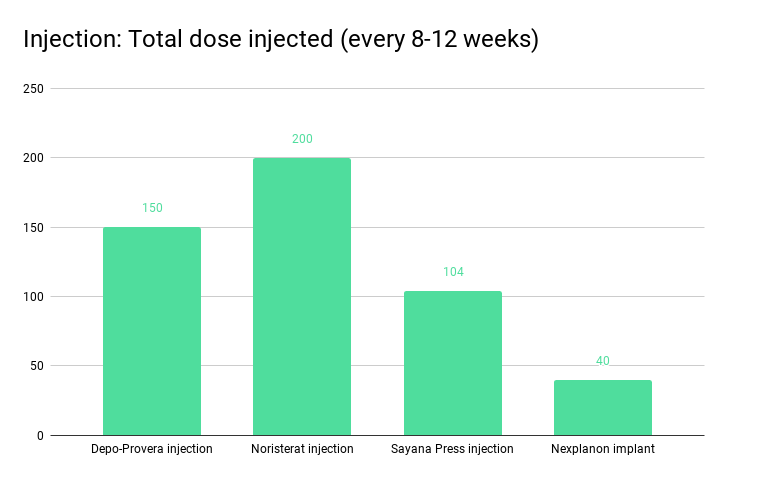
For the contraceptive injection it is not possible to work out the amount of hormone that is ‘released’ into you every day, so we can only give you the total amount injected every 8-12 weeks.
Implant, patch and vaginal ring: approximate micrograms of hormone released every 24 hours (over a 3 week and 3 year period
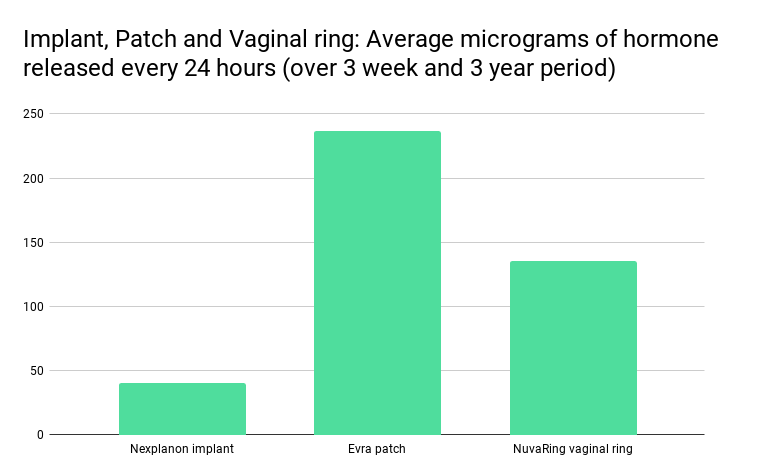
Finally, here are the daily hormone release rates for the implant, ring and patch. The patch and ring amounts are averaged over 3 weeks (the length of time you use one before taking a break) and the implant is averaged over its three year lifespan.
Understanding the levels of hormones in your contraceptive is key to understanding your side effects and how to manage them. For example, high levels of oestrogen can cause nausea and breast tenderness, while high levels of levonorgestrel may cause acne. To be able to compare the different types of hormone, our contraceptive pages are the place to start. And if you’re confused, please speak to one of our fab women’s health doctors.
Our medical review process
This article has been medically reviewed for factual and up to date information by a Lowdown doctor.


